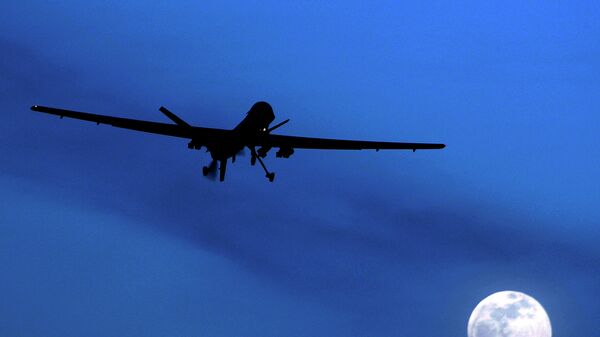1.Birds
The history of drones can be dated back to November 1, 1911, when Italian Lieutenant Giulio Gavotti became the first aerial bombardier when he leaned out of his airplane and dropped a Haasen hand grenade near the Libyan capital Tripoli. One hundred years on, bombing is being implemented by unmanned planes, which are called "birds" by "people on the inside," according to the Intercept. The drones are controlled remotely by operators who can watch their targets for hours until they get the order to fire. This is where they sit.
2. Objectives
These are "specific" people who are being hunted by drone operators. Here' an example of what an objective look like. This timeline pertains to Bilal el-Berjawi, who was wanted by intelligence agencies for years and who was finally killed by an American drone strike on his car.
3. Jackpot
JP, or "jackpot", is a reference to drone operators hitting their target, which typically is the person they plan to kill. When the operators miss the target and kill someone else, they describe the person as EKIA, or "enemy killed in action."
4. EKIA
For example, at least 155 people, including 19 "jackpots", were killed by US drones and other aircraft in Afghanistan within a five-month period. Additionally, 136 other people were killed, all of whom were classified as EKIA.
The Intercept specifically drew attention to the "%" column, which contains the number of "jackpots", divided by the number of operations. Notably, a 70-percent success rate "ignores well over a hundred other people killed along the way," according to the Intercept, which added that "this means that almost 9 out of 10 people killed in these strikes were not the intended targets."
5. Touchdown
This is a word that operators use to report that a night raid or drone strike successfully neutralized a target’s phone. In this regard, it is worth mentioning that drones do not always target people and can be aimed at a mobile phone, especially its SIM card, which provides a person’s location.
6. Baseball card
BBCs, or "baseball cards" are the method that the military uses to visualize information. The BBCs are used "to display data, map relationships between people, and identify an individual’s so-called pattern of life," the Intercept explained. They certainly do not look like baseball cards, but they provide the following information.
7. Blink
This is something that happens when an UAV has to move and there is no other aircraft to continue watching a target. The Intercept quoted the classified documents as saying that this is a major challenge facing the military, which always seeks to have a "persistent
stare."
8. Footprint
According to the Intercept, "drones are not magic," and "they have to take off from somewhere." Since 2012, the US Joint Special Operations Command (JSOC) has had bases in Djibouti, Kenya, and Ethiopia, which operated eleven Predators and five Reaper drones over the Horn of Africa and Yemen.
The based were moved to a more remote airstrip in Chabelley, Djibouti after a spate of crashes involving multiple Predator drones near Camp Lemonnier.

This is how the US views its surveillance capabilities in Africa more broadly.
9. Orbits
The Intercept said that the US military is seriously concerned about the so-called "tyranny of distance."
Unlike the traditional battlefields of Iraq and Afghanistan, US drones have to cover significant distances so as to reach their "named areas of interest," or NAIs, in Yemen and Somalia. Here's where the US seems to have "finished" people in Yemen, according to the Intercept.
10. Kill Chain
Lawyers and human rights activists have repeatedly wondered about how "non-battlefield assassinations are authorized" and whether they fall "within the Authorization for Use of Military Force (AUMF) or through some other authority," the Intercept said. It added that the leaked documents "suggest a linear chain — all the way up to the President of the United States (POTUS)."
11. Watchlist
The Intercept explained that a drone, which is equipped with a simulated cell tower called GILGAMESH, can prompt a target’s phone to lock onto it, and then use the phone's signals to "triangulate that person’s location". This is what a watchlist looks like.
12. Find, Fix, Finish
This is part of the so-called F3EA doctrine, which includes the "find, fix and finish" cycle, as well as the "exploit and analyze" stage of the Intelligence, Surveillance, and Reconnaissance process. According to the Intercept,"the cycle feeds back into itself", with the entire process "amounting to human hunting". The hunt for a new target starts after an earlier target is finished, the Intercept concluded.




















